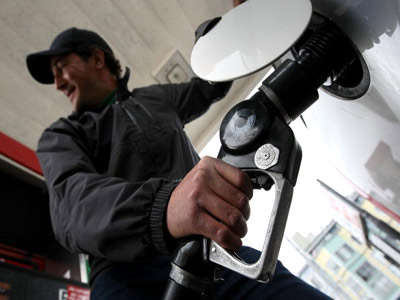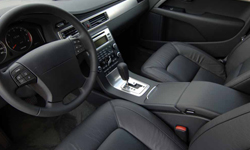 Filling up at the pump is a constant and somewhat annoying ritual for drivers.
Filling up at the pump is a constant and somewhat annoying ritual for drivers.
Your vacation has just begun and you're making the drive to the mountains or to the beach or to some other place that you've been dreaming about for months. You're ready to go, but before you can go more than a few miles, you have to head for the nearest exit -- it's already time to buy gas. With gasoline prices as volatile as they've been in recent years, this isn't likely to be your favorite part of the trip. There's even a chance that sticker shock at the pump may lead you to skip that evening's fancy dinner and stop for a fast-food meal instead. Unfortunately, in a world that depends on automobiles for basic transportation, pumping and purchasing gas is a necessary evil -- for the moment, anyway.
During all those trips to the pump, have you ever stopped to wonder where the gas in the service station dispenser comes from or how it gets from the dispenser to your car's gas tank? The process isn't difficult to understand, but gas companies have gone to a great deal of trouble to hide the details. Pumping gas may seem like a simple matter of lifting a pump, pushing some buttons and sometimes swiping a credit card through a reader or waving a credit wand at a detector. What goes on inside the gas dispenser itself, however, is a bit more complicated than that.
You already know the drill: Swipe your credit card, tell the dispenser what kind of gas you want and start pumping. When your tank is full, pay for the gas, hop back in the driver's seat and head for the open road. But that simple description raises more questions than it answers. How does the gas get to the car? How does the pump know when to stop pumping? How does it mix the exact blend of gas that the customer wants? And what happens if you accidentally drive off with the gas pump still attached to your car? Keep reading to find out.
When the customer removes the pump handle from its place on the side of the dispenser, this action activates a switch that starts the dispenser operation. (In some cases the switch is spring-loaded and activates automatically; in others, the customer must raise a small lever manually to begin the process.) At that point, the customer simply inserts the nozzle into the car's gas tank and pulls the lever. Stopping the flow of gas is just as simple -- the customer need only release the lever to cut off the stream of fuel.
But what if the tank fills unexpectedly to the brim and the gasoline threatens to overflow? As anyone who's ever operated a gas pump knows, the pump will switch off automatically. But how does the pump know when to stop pumping?
As the gas level in the tank rises, the distance between the dispenser nozzle and the fuel grows smaller. A small pipe called a venturi runs alongside the gas nozzle. When the end of the venturi pipe becomes submerged in the rising gas, it chokes off the air pressure that holds the nozzle handle open and shuts down the flow of gas. Unfortunately, this shutdown can sometimes happen before the tank is full as the rapidly flowing gas backs up on its way into the tank. This can cause the gas handle to spring open before pumping is complete, leaving the annoyed customer to squeeze the handle again and risk the possibility of overflow. Pausing briefly will allow the gas to continue into the tank and the pump nozzle to start pouring gas again.
For more information on fuel and fuel efficiency, take a look at the links on the next page.
This is the part of the gas pump that has most visibly evolved over the years. Until a few decades ago, rotating wheels with numerals on them ticked off the number of gallons and price of gas as the pump operated. In the 1970s, glowing LCDs in the form of seven-segment displays began to appear. (The segments in the display could be illuminated by computer to form various numerals and occasionally letters of the alphabet.) These relatively simple user interfaces are gradually being replaced by full-fledged computer video displays, many running variations on operating systems like Microsoft Windows. These displays can offer information, display the amount of gas being sold and even run advertisements and carry on simple conversations with amused customers.

The gasoline sold at service stations is stored underground in buried tanks. Each holds several thousand gallons of gas. There are at least two of these tanks per station and each tank usually holds a different grade of gas. Having the gas tanks underground presents an obvious problem: If the gas must get to a dispenser (and your car's gas tank) located above ground, it has to defy gravity in order to get there -- like a waterfall flowing uphill. But moving the gas from its subterranean hideaway up to street level isn't as difficult as you might think.
Most service stations do the job using one of two types of pump -- a submersible pump or a suction pump:
The major advantage of a submersible pump over a suction pump is that the impeller can push water over longer vertical distances. However, because the gas tanks at most service stations are located only a few feet below the dispenser, a suction pump is usually more than adequate for the task at hand. There's more to this process, though, and we'll explore it further on the next page.
Special thanks to C.R. Newlin at Franklin Fueling and Mike Hardin at Dresser Wayne for their invaluable help with this article.